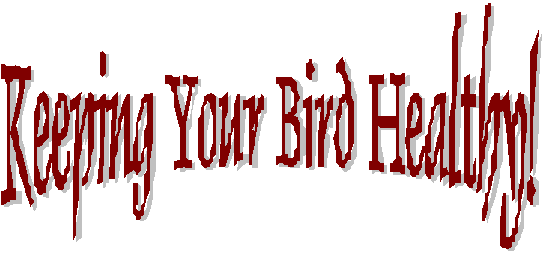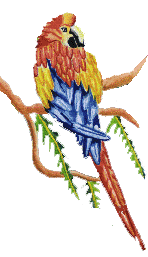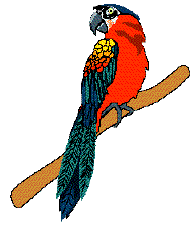




 By the time a bird shows any symptoms of infirmity, it is often too late to help it. The best medicines you can provide for your pet bird are prevention and proper nutrition!! Before you do anything else, find a good veterinarian who can provide competent, complete, thorough, regular check-ups for your pet. This medical professional should be a Certified Avian Veterinarian. If you are having problems finding one in your area, contact:
By the time a bird shows any symptoms of infirmity, it is often too late to help it. The best medicines you can provide for your pet bird are prevention and proper nutrition!! Before you do anything else, find a good veterinarian who can provide competent, complete, thorough, regular check-ups for your pet. This medical professional should be a Certified Avian Veterinarian. If you are having problems finding one in your area, contact:
 Check your bird's droppings, regularly!!
Check your bird's droppings, regularly!!  Most of the major causes of injury to your pet bird are a result of poor/improper supervision and poor/improper grooming, especially the failure to regularly clip the primary flight feathers. It is not mean or inhumane to keep your pet bird grounded. Allowing it to keep its flight can result in many mishaps: banging into windows; flying into fans, toilets and walls or escaping through an open window or door, and allowing your bird to freely roam outside of its cage without supervision can prove to be just as dangerous.
Most of the major causes of injury to your pet bird are a result of poor/improper supervision and poor/improper grooming, especially the failure to regularly clip the primary flight feathers. It is not mean or inhumane to keep your pet bird grounded. Allowing it to keep its flight can result in many mishaps: banging into windows; flying into fans, toilets and walls or escaping through an open window or door, and allowing your bird to freely roam outside of its cage without supervision can prove to be just as dangerous.
| ||||
|---|---|---|---|---|
 |
 |
 |
||
 |
 |
|||


|